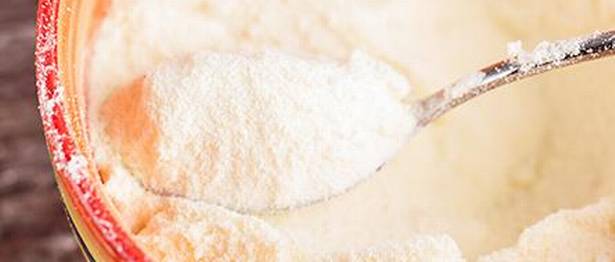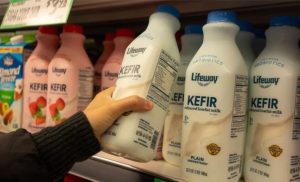The declines were led by Cheddar cheese, down 3.6%, after falling 5.3% Aug. 4. Lactose was down 3.3%, after jumping 5.7% last time.
It was followed by anhydrous milkfat, down 2.9%, after gaining 3.0% last time, and butter which was down 2.0%, following a 2.8% descent last time.
Whole milk powder was down 2.2%, following a 7.5% dip last time.
The only product in the black was skim milk powder, up 1.1%, after falling 4.6% on Aug. 4.
StoneX Group equated the GDT 80% butterfat butter price to $1.4915 per pound U.S., down 3 cents from the last event. CME butter closed Tuesday at $1.52.
GDT Cheddar cheese equated to $1.5614 per pound, down 5.7 cents after losing 10.6 cents in the last event, and compares to Tuesday’s CME block Cheddar at $1.7975.
GDT skim milk powder averaged $1.1831 per pound, up from $1.1714, and whole milk powder averaged $1.3317, down from $1.3623. CME Grade A nonfat dry milk closed Tuesday at $1.0125 per pound.
Mixed markets
CME block Cheddar traded down to $1.58 per pound last Tuesday, lowest since May 13, but then rallied with its first gain in 22 sessions on Wednesday, and closed Friday at $1.82, up 11.5 cents on the week, but 6 cents below a year ago.
The blocks inched a half-cent lower Monday, as traders anticipated Tuesday morning’s Global Dairy Trade and Wednesday afternoon’s July Milk Production report. They lost 1.75 cents Tuesday, falling to $1.7975.
The barrels fell to $1.4450 last Tuesday, also rallied, and closed Friday at $1.50, still 1.75 cents lower on the week and 26.5 cents below a year ago; 22 cars of block traded hands last week and 35 of barrel.
Monday saw the barrels roll 4 cents lower and then lop off 6 cents Tuesday, dropping to $1.40, 39.75 cents below the blocks.
Considering recent strong milk prices we would expect a strong July milk output following the small increase we saw in June. However, chief meteorologist for RiskPulse, Jon Davis, in an American Dairy Products Institute virtual conference the last week of July, showed temperatures in the top 28 producing counties in the U.S.
FC Stone says those states represented roughly 75% of total U.S. milk production and, during the first 7 weeks of this summer, those 28 counties experienced the highest temperatures since the turn of the century.
FC Stone adds, “We know cows are somewhat better insulated from weather, but we have to imagine there was some loss in production associated with this type of heat.” Perhaps we will see that in Wednesday’s report.
Meanwhile, Midwest cheese production is “active with plenty of milk,” says Dairy Market News. A number of plant managers said they are at the onset of holiday season preparations. Cheese market tones are notably weaker, though a number of contacts believe prices are at “more reasonable levels both domestically, and importantly, on international markets.”
Western cheesemakers report international buyers are showing a little more interest now that cheese prices have fallen, says DMN, “But as cheese supply-and-demand pitch and yaw, market participants are hesitant to make any sudden moves. Buyers seem willing to wait for a better deal, unsure if the market bottom has been reached.
“Cheese availability has improved but export deals inked when cheese prices were at the lowest are getting finished. Restaurants may face tighter restrictions while the states and the nation grapple with heavy COVID caseloads,” DMN warned, “releasing more cheese to the market. Manufacturers want to control production and not get swamped by supply.”
Spot butter whipsawed some but closed last week at $1.4850 per pound, down 4.5 cents and 85.5 cents below a year ago, with 49 cars exchanging hands.
The oscillating butter market was up 5.5 cents Monday but lost 2 cents Tuesday, slipping to $1.52, with 18 cars exchanging hands.
Midwest butter makers tell DMN that cream is slightly tighter but still sufficient to keep plants at or near capacity. Retail butter demand has slid and food service numbers lag previous years’ numbers. Market tones are unsteady but some participants expect $1.50 to $2.00 prices until year’s end.
COVID-19 induced uncertainties in the West continue to affect the butter market. Prices may have decreased but sales have not changed much in domestic and international markets. Retail sales are stronger compared to the past year but not enough to make up for the market share lost in the foodservice industry.
Grade A nonfat dry milk also had its ups and downs last week but closed at 96.50 cents per pound, up a penny on the week, but 6.5 cents below a year ago, with 26 sales.
Monday’s powder gained 1.5 cents and jumped 3.25 cents Tuesday, shooting to $1.0125 per pound, highest since July 14.
StoneX says NFDM was running way below global prices, trading under $1.00 per pound “with no real story to push it higher.” “We are using some powder to fortify domestic cheese vats but demand is sluggish,” StoneX warned, “and a weakening global economy isn’t going to help.”
Dry whey slipped to 31 cents per pound last Tuesday but closed Friday at 32.5 cents, a half-cent higher on the week but 4 cents below a year ago on 8 sales.
The whey was up 1.75 cents Monday but eased back a quarter-cent Tuesday, to 34 cents per pound.
More milk, lower prices
The Agriculture Department raised its 2020 milk production forecast from last month’s estimate, in the latest World Agriculture Supply and Demand Estimates report, citing higher expected growth in milk per cow more than offsetting a slightly lower dairy cow number. The 2021 forecast was lowered, based on a slower growth in cow numbers.
2020 production and marketings were estimated at 221.8 billion and 220.7 billion pounds, respectively, up 300 million pounds on production from their July estimate and up 200 million pounds on marketings. If realized, 2020 production would be up 3.4 billion pounds or 1.6% from 2019.
2021 production and marketings were estimated at 225.3 billion and 224.3 billion pounds, respectively, down 300 million pounds on both. If realized, 2021 production would be up 3.5 billion pounds or 1.6% from 2020.
Cheese, butter and nonfat dry milk (NDM) price forecasts were reduced from last month, while the whey price forecast was unchanged. The Class III milk price forecast was reduced, based on lower cheese prices, while the Class IV forecast was reduced on lower butter and NDM price forecasts.
Price forecasts for 2021 cheese and butter were lowered, the whey forecast was increased, and the NDM price forecast was unchanged.
Look for a 2020 Class III average at around $17.40, says USDA, down 60 cents from what was forecast a month ago, and compares to the 2019 average of $16.96 and $14.61 in 2018. The 2021 Class III average is now put at $16.10, down a dime from what was projected last month.
The Class IV price is expected to average around $13.55, down 40 cents from last month’s estimate, and compares to the 2019 average of $16.30 and $14.23 in 2018. The 2021 Class IV average was projected at $13.65, down 15 cents from last month’s estimate.
Fluid spikes, then falls
The Agriculture Department, in catch-up mode likely due to the bankruptcy situation of Dean Foods and Borden’s, delivered five month’s-worth of backlogged fluid milk sales data last week.
The reports showed January fluid sales were down 3.7% from January 2019, with organic sales up 1.2%. February sales were up 1.0%, with organic up 6.9%. March sales soared 7.9%, a likely COVID-inspired gain, with organic up 21.1%, but April sales were down 0.5%, while organic sales were up 23.7%.
May fluid sales, the latest data available, totaled 3.79 billion pounds of packaged product, down 3.2% from May 2019.
Conventional product sales totaled 3.5 billion pounds, down 4.2% from a year ago. Organic products, at 252 million pounds, were up 14.0% and represented 6.7% of total sales for the month.
Whole milk sales totaled 1.3 billion pounds, up 3.4% from a year ago. Sales for the five-month period totaled 6.7 billion pounds, up 6.5% from 2019, and made up 34.7% of total milk sales for May and 34% thus far for the year.
Skim milk sales, at 243 million pounds, were down 16.3% from a year ago and down 12.9% year to date.
Total packaged fluid milk sales, January through May, hit 19.6 billion pounds, up 0.2% from 2019. Conventional product sales totaled 18.4 billion pounds, down 0.5%. Organic products, at 1.2 billion pounds, were up 13.1% and represented an impressive 6.1% of total fluid milk sales so far for the year.
The figures represent consumption of fluid milk products in Federal milk order marketing areas and California, which account for approximately 92% of total fluid milk sales in the U.S.













